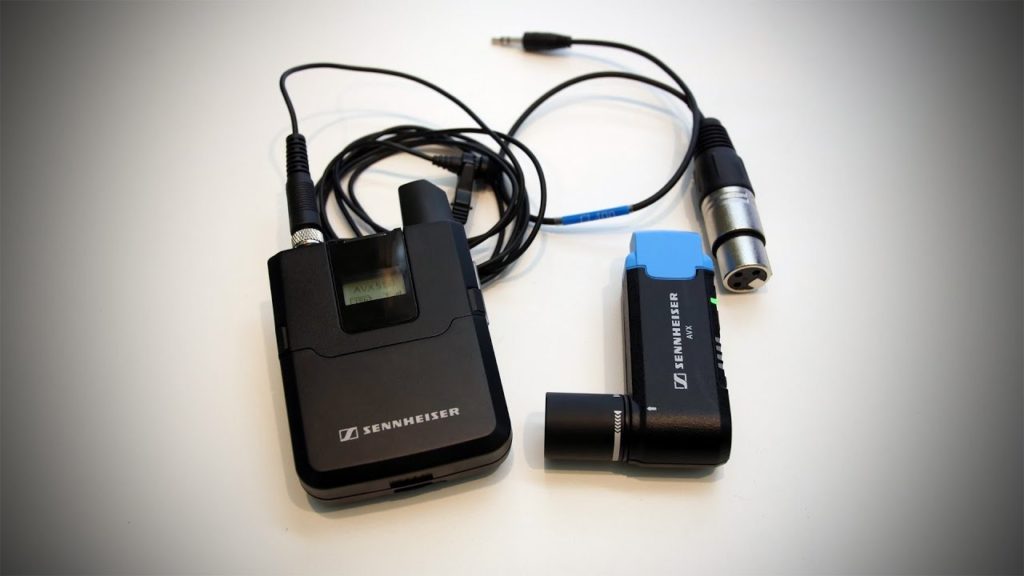Video Production and video content will be more important now than ever. Every business owner will be looking to reach their potential client virtually. Often this is done through video conferencing but when scheduling conflicts arise, many will be relying on filmed content. As a professional videographer, I try to emphasize the value of professional video production. The quality of video is a must of course but it is the quality of audio that separates amateur video content from professional video content. In this article, I will talk about how you achieve that professional sounding audio.
Choose the Right Microphone for Video Production
The first thing to consider is the choice of the microphone. More specifically, the location of the microphone is really the key in producing high quality sound. The closer the microphone is to the subject the clearer the sound will be. A recorded sound source has a signal to noise ratio. The signal in our case is the speech of the human subject, while the noise are the sounds of room fans, crowds in the backgrounds, wind outside, and the echo of the voice created by the speaking subject. Good microphones have higher signal to noise ratio. However, even very high end microphones will pick up noise if the room is not quiet.
My favorite choice of microphones are lavalier (and often wireless) microphones for any film or video productions. When I film an interview I can clip the mic about 6 inches from the mouth so the speaking sound is well recorded. Most lavaliers have what is known as an omni pick up pattern which means they pick up signals equally well from all directions. This means that a lavalier microphone can be clipped upside down and it will still sound clean. Another popular choice for recording speech in film and video production is a shotgun microphone. The pick up pattern for a shotgun microphone is very narrow which means that the microphone has to be pointed directly at the speaker. However the narrow pick up pattern reduced the noise by eliminating sounds that are not in focus (or pointed at with the mic). It is important to remember that the shotgun microphone needs to be placed as close as possible to the speaker to pick up good sound. Although, I personally prefer a good lavalier mic, there are instances where the shotgun mic actually works better. For example, when there are multiple speakers talking over each other, multiple lavalier mics can interfere with each one another.

Learn Post-Production Audio Tools
Once audio is recorded using a well positioned microphone, more work is needed in film or video post production. As a professional videographer, most of my video editing work is done in Adobe Premiere software. However, I like to migrate my audio work to a Digital Audio Workstation (DAW). DAWs are programs designed for musicians to produce their work. These programs offer flexibility that simply Premiere and other video edit programs do not. In this article I will not go in depth why DAWs are better for audio, but instead focus on a few key components of audio mixing.
The first mixing tool that I use when treating recorded audio in video production is compression. Compression allows to attenuate the volume of parts that are too loud and increase the volume on parts that are not loud enough. This treatment can also resolve volume inconsistencies that occurred during the video filming session. Next in the mixing chain is equalization or often referred to as simply EQ. EQ allows us to increase the volume across specific audio bands. For example, most speech recordings have the low end rumbling sound when initially recorded. Using an EQ I can reduce the rumble by cutting off all audio frequencies say below 70 Hz and create more presence in the high frequency by increasing volume at around 6 kHz. Another useful tool in the mixing process is the noise reduction. There are many good ones out there but essentially what they do is scan the audio source and use an algorithm to separate signal from noise. Of course, these tools are far from perfect and they only help and cannot be used in place of good recording. Another tool that is often used to reduce noise is gate. Gate basically has a threshold at which it allows the sound to pass through. So if noise is below that threshold, the gate will be closed and no audio will pass. The gate is very useful at reducing noise in between words. The scope of this article cannot cover mixing tools like compression, gate, and EQ in detail but there are hundreds of articles and Youtube videos that focus specifically on these tools. Below is a video in which I thoroughly explain my approach to mixing sound, sound design, and score in film production.
Audio is Key to Professional Videographer
In this article I merely hinted at what is the process of getting clean audio in film or video production. Of course, each video session is different and presents a variety of audio problems with an even larger variety of solutions. In the end, a professional videographer has to learn how to record clean audio. Essentially, it is the ability to handle the audio that separates a professional videographer from a photographer who simply hits “record” on his/her very capable camera.
For more sample of our work click here
